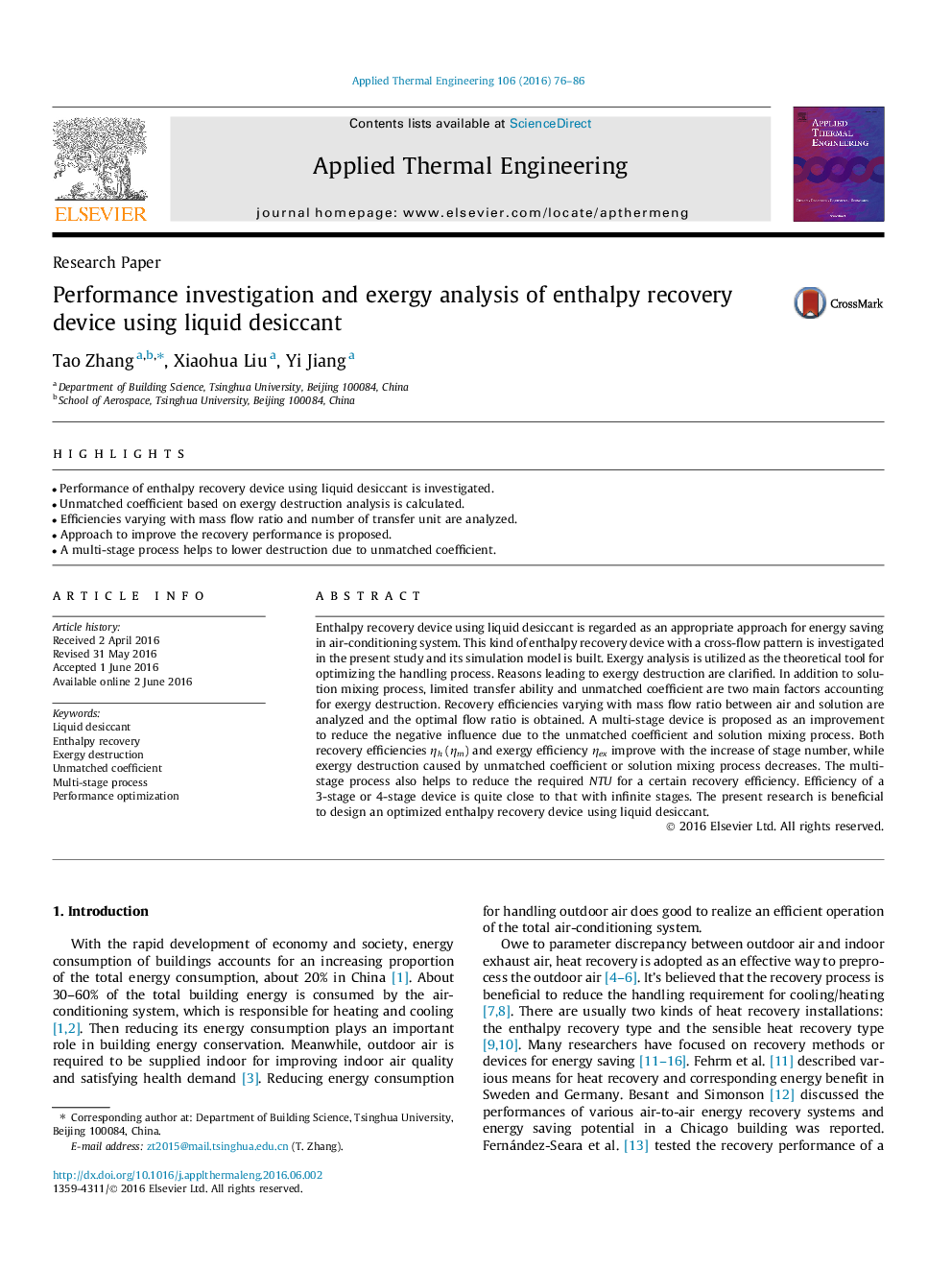| Article ID | Journal | Published Year | Pages | File Type |
|---|---|---|---|---|
| 7047365 | Applied Thermal Engineering | 2016 | 11 Pages |
Abstract
Enthalpy recovery device using liquid desiccant is regarded as an appropriate approach for energy saving in air-conditioning system. This kind of enthalpy recovery device with a cross-flow pattern is investigated in the present study and its simulation model is built. Exergy analysis is utilized as the theoretical tool for optimizing the handling process. Reasons leading to exergy destruction are clarified. In addition to solution mixing process, limited transfer ability and unmatched coefficient are two main factors accounting for exergy destruction. Recovery efficiencies varying with mass flow ratio between air and solution are analyzed and the optimal flow ratio is obtained. A multi-stage device is proposed as an improvement to reduce the negative influence due to the unmatched coefficient and solution mixing process. Both recovery efficiencies ηh (ηm) and exergy efficiency ηex improve with the increase of stage number, while exergy destruction caused by unmatched coefficient or solution mixing process decreases. The multi-stage process also helps to reduce the required NTU for a certain recovery efficiency. Efficiency of a 3-stage or 4-stage device is quite close to that with infinite stages. The present research is beneficial to design an optimized enthalpy recovery device using liquid desiccant.
Keywords
Related Topics
Physical Sciences and Engineering
Chemical Engineering
Fluid Flow and Transfer Processes
Authors
Tao Zhang, Xiaohua Liu, Yi Jiang,
